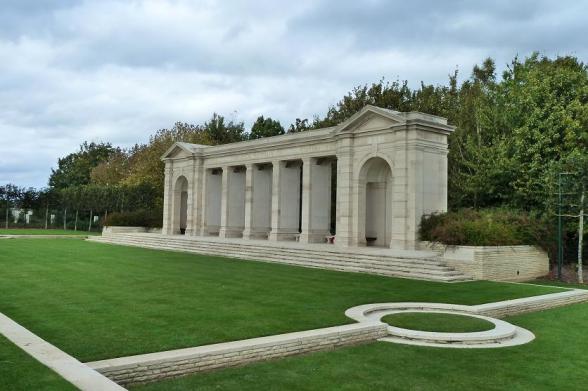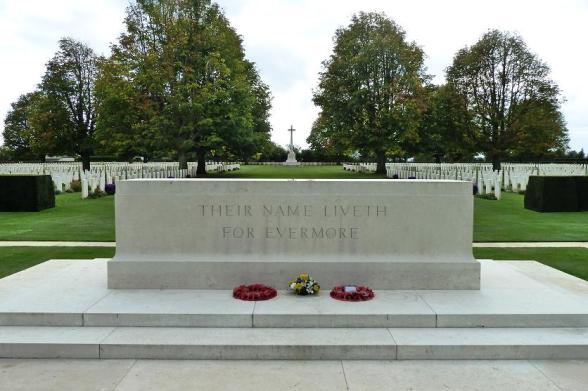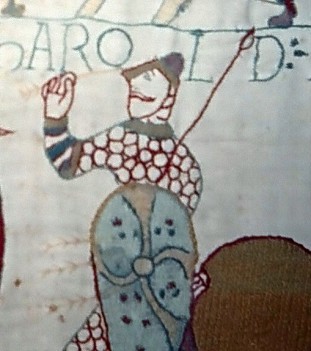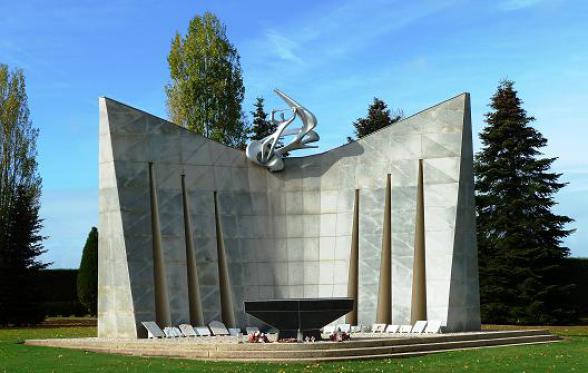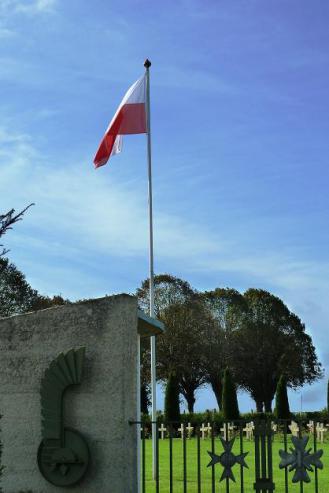
Normandy - Part 5
Steve woke – without a bell being rung.
The campanologists could have been banging out the opening bars of “Smoke on the Water” for an hour and he would not have heard a peep. The first few days in Normandy had been an Indian summer,
so seeing that Steve hates being warm (it would melt his heart of ice) he had to have his window in the gite wide open all night for the first few nights. Great for star gazing, drifting off as
the heavens moved. Watching shooting stars from his bed. But the weather had turned a bit, so the windows and the wooden shutters, well, were shut (hence the name) so he had a peaceful
nights sleep. Waking to his alarm, going down stairs and put on coffee – at his own designated getting up time, this was the life. Today was the day when we visited the first of the
British beaches. Gold.
The seaside town of Arromanches-les-Bains (or, simply Arromanches) is a strange place to visit, totally different
now from how it was on D-Day. Yes that is stating the obvious, but it has become almost a provincial seaside town that you’d see in the UK – not quite a Blackpool, but more a Scarborough.
The town is where the British forces landed on D-day and, sadly it has become the touristy of traps. Not wish to offend the good people of Arromanches, but it is in places quite tacky – no saying
that there are any “kiss me quick hats” or “win a cheap tray” bingo places – but it is crammed with fast food shops and souvenir shops. The place was busy and heaving with tourists (many different
nationalities) and school kids and the take aways and the souvenir shops were doing a roaring trade – Although why anyone would buy a D-Day “Tea towel” or a Lighter the shape of the Mulberry Harbour
is beyond the NMBS.
The NMBS plotted themselves down at a fast food place – The Café American. And sorry to say it was dreadful. Kevin
had a burger that claimed to be a half pounder – well maybe a half pounder in zero gravity, and it was the size and the thickness of a rich tea biscuit. Indeed a rich tea would have filled
Kevin up more. He also informed us that it tasted disgusting. Steve had some anaemic chips, sorry frites (although its Café American it could have been fries); Stuart and Gerry had a
Croque Monsieur – more like a Croque Verypoor.
Lance was clever and sneaked off to another place and got some nosebag there. Even if it was a pot noodle or a
cuppa soup it would have been haute cuisine compared to the rubbish the other four had eaten and paid (a not cheap) price for. So, seeing this website is a place of top tips for any Battlefield
Tourists – take a packed lunch to Arromanches and if you do wish to eat in a café – pay the high prices of the many restaurants and avoid the cheap burger and fast food places. Yes, the NMBS
have mentioned the surly French barmen before. Smoking Giantes, Tutting when you ask for something etc etc, but it seemed they have branched out into running fast food places
too.
We were hitting the last few days in Normandy and we still had a lot to cram in and see. Luckily the major areas that could have taken time like Bayeux and Pegasus Bridge we had done before, so we decided to limit what we saw at these sites. So when we reached Bayeux it was a situation where we totally missed the Tapestry (and if you know your stuff, it’s NOT a tapestry, it is an embroidery and you would have lost points on QI)
But we headed to the CWGC site instead, passing the huge Eisenhower memorial on the way – With Steve leaning out of the car window as Lance drove to get a picture.The Bayeux War Cemetery is the largest Second World War cemetery of Commonwealth soldiers in France, located in Bayeux, Normandy. The cemetery contains 4,648 burials, mostly from the Invasion of Normandy. Opposite this cemetery stands the Bayeux Memorial which commemorates more than 1,800 casualties of the Commonwealth forces who died in Normandy and have no known grave.
The cemetery grounds were assigned to the United Kingdom in perpetuity by France in recognition of the sacrifices made by the British Empire in the defense and liberation of France during the war. In addition to the Commonwealth burials, there are 366 graves of German soldiers.The Bayeux Memorial was erected in white stone facing the cemetery. The Latin epitaph along the frieze of the memorial is a reference to William the Conqueror and the Invasion of England in 1066.
The translation reads: “We, once conquered by William, have now set free the Conqueror’s native land.” A bit of a two-fingered back-handed compliment to the last invader of the UK we think....
On this memorial are engraved the names of the 1,808 men of the Commonwealth who died in the Battle of Normandy and who have no known grave. The Bayeux Memorial in Normandy, France commemorates 194 Canadian servicemen and women. Among the names are the 189 men of the 43rd Divisional Reconnaissance Regiment who were aboard the ill-fated Derrycunihy.
On the night of 23 July 1944, the ship was anchored off the coast of Ouistreham (Sword Beach), and the regiment was waiting to disembark. At 0800 the ship’s engines detonated a submerged German mine, ripping the hull apart. This was the biggest British loss of life off the Normandy beaches. The 189 missing men’s names are engraved on the wall in Bayeux.
As part of the Hill 112 and Hill 262 battles in Normandy we visited these two hills, sadly we again skirted around 262 as we did not have time to give it justice – again it’s a “Must see” for
another year – Most of the Falaise Pocket will be! But we visited the Polish War cemetery Grainville-Langannerie Urville is the only Polish World War II cemetery in France, and within its quite
confines are 696 graves.
The majority of the fallen interred were part of Major-General Maczeks 1st Armored Division, who entered the battle of Normandy in August 1944, as well as other Polish soldiers who died in other
parts of France, fighting for its liberation. A V-shaped monument, on the pinnacle of which sits the Polish emblem of the eagle, dominates the cemetery. The gates to the Cemetery are nice with
the regiment badges of the various Polish units.
We headed to the Canadian Cemetery at Bretteville-sur-Laize. Bretteville-sur-Laize was created as a permanent resting place for Canadian soldiers who had been temporarily interred in smaller plots close to where they fell. At the time of the cemetery's creation, France granted Canada a perpetual concession to the land occupied by the cemetery. The graves contain 2793 soldiers from the 2nd Canadian Corps, 91 of them unknown, and 79 RCAF airmen killed in the Battle of Normandy.
A large number of dead in the cemetery were killed in the battle for the Falaise Pocket in August 1944. Canadians killed earlier in the Battle of Normandy were interred in the nearby Bény-sur-Mer Canadian War Cemetery.
Leading to a notorious battle – Hill 112 or “Operation Jupiter” was the next port of call on the NMBS itinerary. Operation Jupiter was an attack launched by the British Second Army's VIII Corps on 10 July 1944. The objective of the attack was to capture the villages of Baron-sur-Odon, Fontaine-Étoupefour, Chateau de Fontaine and recapture Hill 112.
Following the capture of these objectives, the Corps would then capture Éterville and the village of Maltot and the ground up to the River Orne. Tanks from the 4th Armored Brigade, supported by infantry, would then advance through the captured ground and secure several further villages to the west of the River Orne.
It was hoped that all objectives could be captured by 0900 hours on the first day following which, elements of the 4th Armored Brigade, could start their attacks. The operation was initially very successful however heavy fighting for Hill 112 went on all day and the village of Maltot changed hands several times.
The first battle for Hill 112 was fought at the end of Operation Epsom when the tanks of 11th Armored Division broke out from a bridgehead established by the 2nd Argyll and Sutherland Highlanders at Tourmauville. Hill 112 was an intermediate objective on the way to the River Orne crossings but such was the German reaction that the 23rd Hussars were only able to capture and hold the hill with difficulty.
Hill 112, at the end of a narrow salient, was held by the infantry of The Rifle Brigade. Here they remained under heavy shell and mortar fire until warned by Ultra decryptions of German radio traffic that II SS Panzer Corps was arriving and about to attack, Montgomery ordered them to withdraw and the hill to be abandoned to the Germans.
The British commanders, led by Montgomery, intended to hold the approximately seven German Panzer Divisions, on their front. While the British held the panzers, the Americans captured Cherbourg and broke out from the beachhead. The American objective was feasible because the Americans had only the equivalent of one-and-a-half Panzer divisions facing them throughout most of the campaign.
The main attack on Hill 112 was strategically designed to fix the German panzers and tactically to gain 'elbow room' in what was still a tight beachhead. The 43rd (Wessex) Infantry Division was to attack positions held by 10th SS Panzer Division in what was an extremely fierce battle. The German defenders survived naval bombardment, air attack, and artillery fire but held their ground, crucially supported by Tiger tanks from the 102 SS Heavy Panzer Battalion. These heavy tanks armed with the 88 mm gun had both greater protection and firepower and outclassed the opposing British Churchill and Sherman tanks.
Even though the hill was not captured and was left as a no-mans-land between the two armies, important surrounding villages had been taken. Above all, however, the 9th SS Panzer Division, which had been in the process of moving out of the line to form an operational reserve, was brought back to contain the British. Therefore, on the strategic level Operation, Jupiter was a significant success.
It was not until American troops eventually started to break out from the Normandy lodgment, as Operation Cobra developed momentum, in August 1944, that the Germans withdrew from Hill 112 and the 53rd (Welsh) Division occupied the feature with barely a fight. Casualties during that period amounted to approximately 25,000 British troops and 500 British tanks. The 43rd Wessex sustained 7,000 casualties in the 12 days from 10 to 22 July.
We headed next to an area where the Panzers blocked the crossing over the river Odon.
The VIIIth Corps objective under General O’ Connor was to seize intact the bridges over the river Odon in the first step of the Operation Epsom. On 26 June the Allied forces launched the attack in
the rain.
The 227th Brigade of the 15th Scottish Infantry Division and tanks of the 23rd Hussars took Grainville and Colleville pushing back the German infantry. But the Scots were stopped by counter-attacks of the 12th SS-Panzer-Division tanks. German commandment sent panzer reinforcement to face the VIIIth Corps: Panther of the 2nd Panzer-Division and Tiger of the SS-Panzer-Abteilung 101.
On 27 June the Allied renewed the attack, the German tanks destroyed many British tanks, but they were sent on the battlefield just one tank or in small groups against greater strength. The war of attrition was more and more favourable to the Allied forces. The 2nd Battalion Argyll and Sutherland Highlanders assaulted toward Tourville. At the beginning of the afternoon, an intact bridge was captured over the river Odon. The bridgehead was strengthened with tanks of the 23rd Hussars then with the 159e Brigade at the end of the day.
We parked up on the bridge and passing French motorists, bibbed at us. Lance tutted loudly.
We finally headed to the almost yin and yang of Commonwealth war grave sites. The large Hotton leg Bagues CWGC site has 1036 graves and most are from the battles around Caen.
The Allied offensive in north-western Europe began with the Normandy landings of 6 June 1944. Most of the burials in Hottot-les-Bagues War Cemetery were brought in from the surrounding district, where there was much heavy fighting through June and July 1944 as Commonwealth forces tried to press on from Bayeux in an encircling movement to the south of Caen.
The cemetery contains 1,005 Commonwealth burials of the Second World War, 56 of them unidentified, and 132 German graves. There are 21 Special Memorials within the above, bearing the inscription "Buried near this spot"
We then found the smallest CWGC site in France – which with so many sites in the Somme, is quite astounding. Jerusalem is a tiny hamlet near the village of Chouain.
The area was the scene of bitter fighting when a German armored column sought to retake Bayeux shortly after its liberation. The cemetery was begun on 10 June and is one of the smallest Commonwealth war cemeteries. Jerusalem War Cemetery contains 47 burials, one of them unidentified, and one Czech grave.
The evening twilight was coming and a beer had everyone’s name on it, so we headed back to the gite
